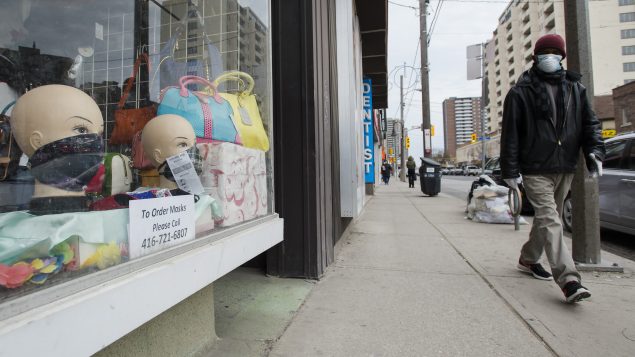More than half of Canadian companies have lost at least 20 per cent of their revenue because of the COVID-19 pandemic, according to a new survey by the national statistics agency.
The survey of 12,600 Canadian companies conducted by Statistics Canada and the Canadian Chamber of Commerce between Apr. 3 and 25 offers a snapshot of the fallout from the pandemic.
Nearly one-third — 32.3 per cent — of businesses have lost 40 per cent of their revenues during the pandemic. A further 21.2 per cent said revenues were down by at least 20 per cent.
The hardest hit businesses were in the accommodation and food services, arts, entertainment and recreation, and retail trade sectors. They were most likely to report a decline in revenue greater than 20 per cent.
On the other hand, more than 40 per cent of businesses in each of the agriculture, forestry, fishing and hunting, and the utilities sectors reported either no change or an increase in revenue.
Nearly two-thirds – 64.8 per cent – of businesses reported being highly affected by lower demand for their products or services, while nearly half – 48.5 per cent – reported being highly affected by the need to cancel services they offered.
Again businesses in the accommodation and food services, arts, entertainment and recreation, and retail trade sectors were most likely to see the demand for their services plunge.
The economic impact of COVID-19 was equally uneven geographically, too.
More than half of all businesses in Alberta, Ontario, British Columbia, Newfoundland and Labrador, and Saskatchewan reported losing at least one-fifth of their revenue.
But almost one-third of companies in Prince Edward Island, the three northern territories and New Brunswick reported either no change or an increase in revenue.
Big hit for employment
Pedro Antunes, chief economist at the Conference Board of Canada, said the survey’s numbers align with their projections that about 15 per cent of the workforce in these hard-hit sectors – accommodation and food services, arts, entertainment and recreation, and retail trade – would lose their jobs in March and April.
These sectors represent about 14 per cent of Canada’s workforce, Antunes said.
But because of generally lower wages in these sectors the overall impact on the Canadian is expected to be a bit smaller.
“We’re seeing these industries over-represented in terms of the size of the hit, but it’s not going to be as big in therms of the GDP,” Andunes said. “The fact that we’re losing or seeing huge losses in 14 per cent of our employment doesn’t necessarily translate one-for-one with the same share of the GDP.”
There are losses in other higher paid sectors such as manufacturing and construction as well, Antunes said.
“Overall, there is no taking away that the economic hit is going to be very sizable,” Antunes said.
The Conference Board of Canada expects to see a 25 per cent annualized hit to the Canadian economy in the second quarter, Antunes said.
That would translate to about 4 per cent loss in the GDP for the whole year, Antunes said.
“And that’s of course even as the economy recovers over the second half of 2020,” he added.
In addition, some these sectors such as tourism will likely not see a rebound until there is a vaccine in place, Antunes said.
However, the income support programs that have been put in place by the various levels of government will cushion the blow somewhat, he said.
“To me what that means is that once people feel a bit more confident about the recovery, they will go out and spend again,” Antunes said. “If it’s not going to a shopping mall to buy retail, it may be online instead. But I do think that we’re going to see a recovery.”
An opportunity for the knowledge economy
Canada has increasingly become a services-based knowledge economy, Antounes said.
“Where we’ve seen the strongest growth in employment over the last decade if not two decades has been in these high-end service jobs,” Antunes said. “Where we see the knowledge economy jobs is in things like financial services and in other professional, scientific and technical services.”
These segments have done very well in terms of employment growth, he said.
“And I do think there is opportunity here with this stress to the system that this pandemic has brought. We’ve seen a lot of businesses really adopt technologies very-very quickly to try and deliver services in this environment,” Antunes said.
And in fact, one the things the survey reports is a steep increase in the number of people teleworking, he added.
“I think there may be an opportunity here in terms of delivering services with technology for a lot of this knowledge economy that we have,” Antunes said. “And perhaps we will see things like better productivity growth from these segments going forward.”







For reasons beyond our control, and for an undetermined period of time, our comment section is now closed. However, our social networks remain open to your contributions.